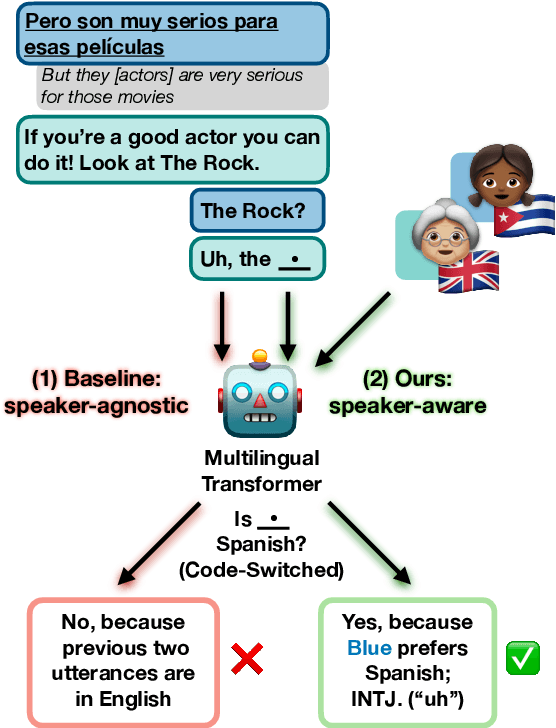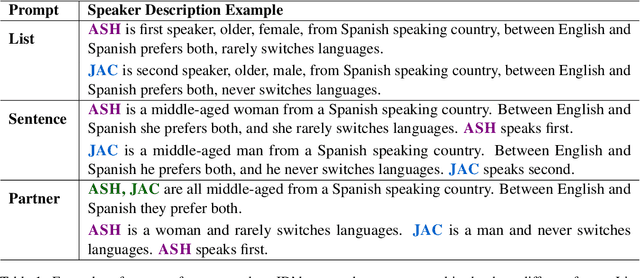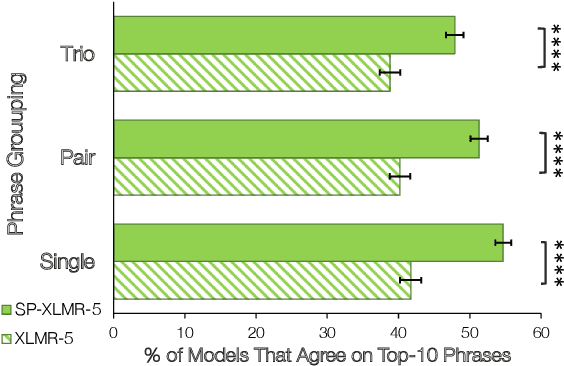Melinda Fricke
Strategies of Code-switching in Human-Machine Dialogs
Aug 10, 2025Abstract:Most people are multilingual, and most multilinguals code-switch, yet the characteristics of code-switched language are not fully understood. We developed a chatbot capable of completing a Map Task with human participants using code-switched Spanish and English. In two experiments, we prompted the bot to code-switch according to different strategies, examining (1) the feasibility of such experiments for investigating bilingual language use, and (2) whether participants would be sensitive to variations in discourse and grammatical patterns. Participants generally enjoyed code-switching with our bot as long as it produced predictable code-switching behavior; when code-switching was random or ungrammatical (as when producing unattested incongruent mixed-language noun phrases, such as `la fork'), participants enjoyed the task less and were less successful at completing it. These results underscore the potential downsides of deploying insufficiently developed multilingual language technology, while also illustrating the promise of such technology for conducting research on bilingual language use.
Speaker Information Can Guide Models to Better Inductive Biases: A Case Study On Predicting Code-Switching
Mar 16, 2022



Abstract:Natural language processing (NLP) models trained on people-generated data can be unreliable because, without any constraints, they can learn from spurious correlations that are not relevant to the task. We hypothesize that enriching models with speaker information in a controlled, educated way can guide them to pick up on relevant inductive biases. For the speaker-driven task of predicting code-switching points in English--Spanish bilingual dialogues, we show that adding sociolinguistically-grounded speaker features as prepended prompts significantly improves accuracy. We find that by adding influential phrases to the input, speaker-informed models learn useful and explainable linguistic information. To our knowledge, we are the first to incorporate speaker characteristics in a neural model for code-switching, and more generally, take a step towards developing transparent, personalized models that use speaker information in a controlled way.
 Add to Chrome
Add to Chrome Add to Firefox
Add to Firefox Add to Edge
Add to Edge